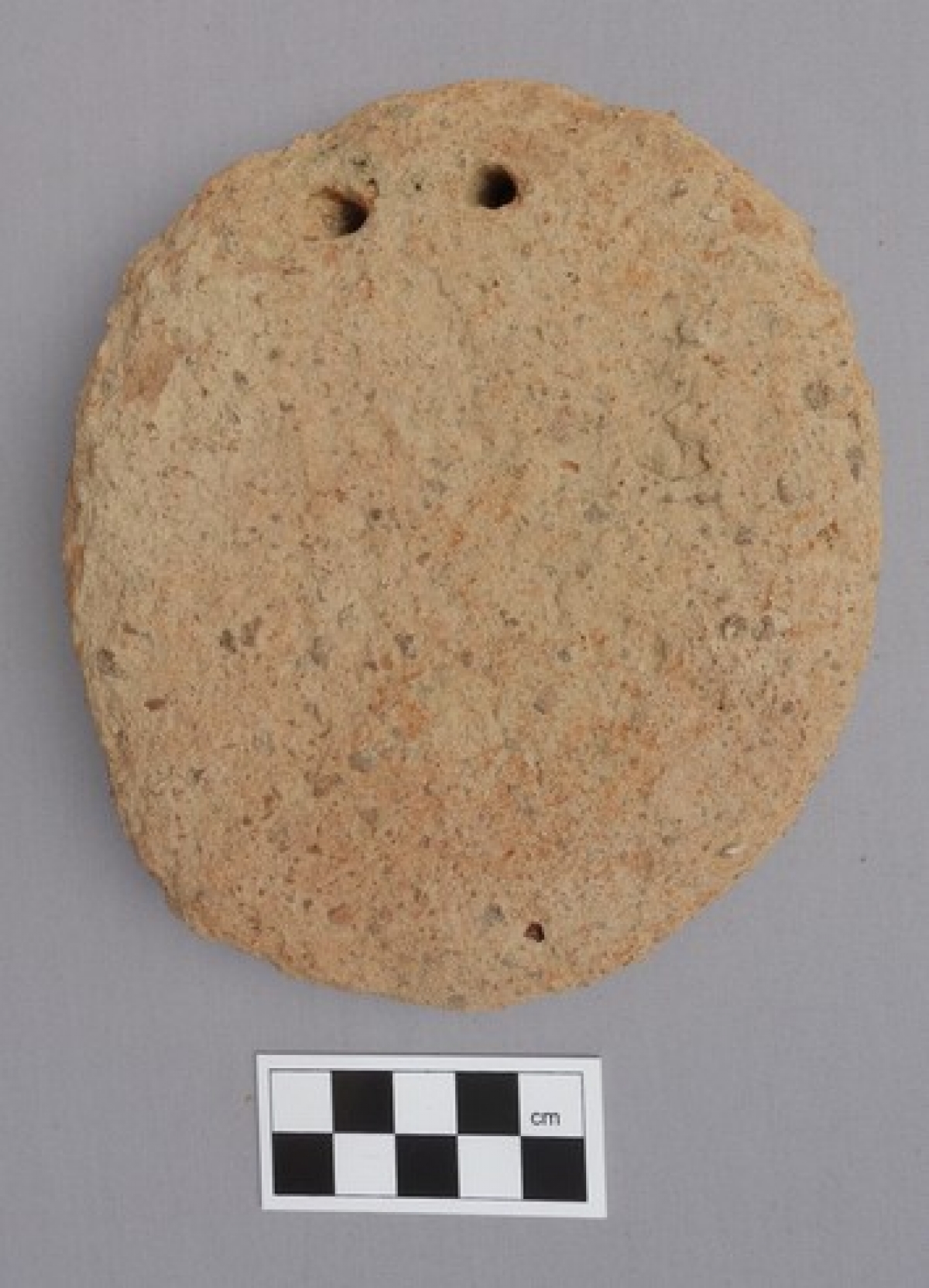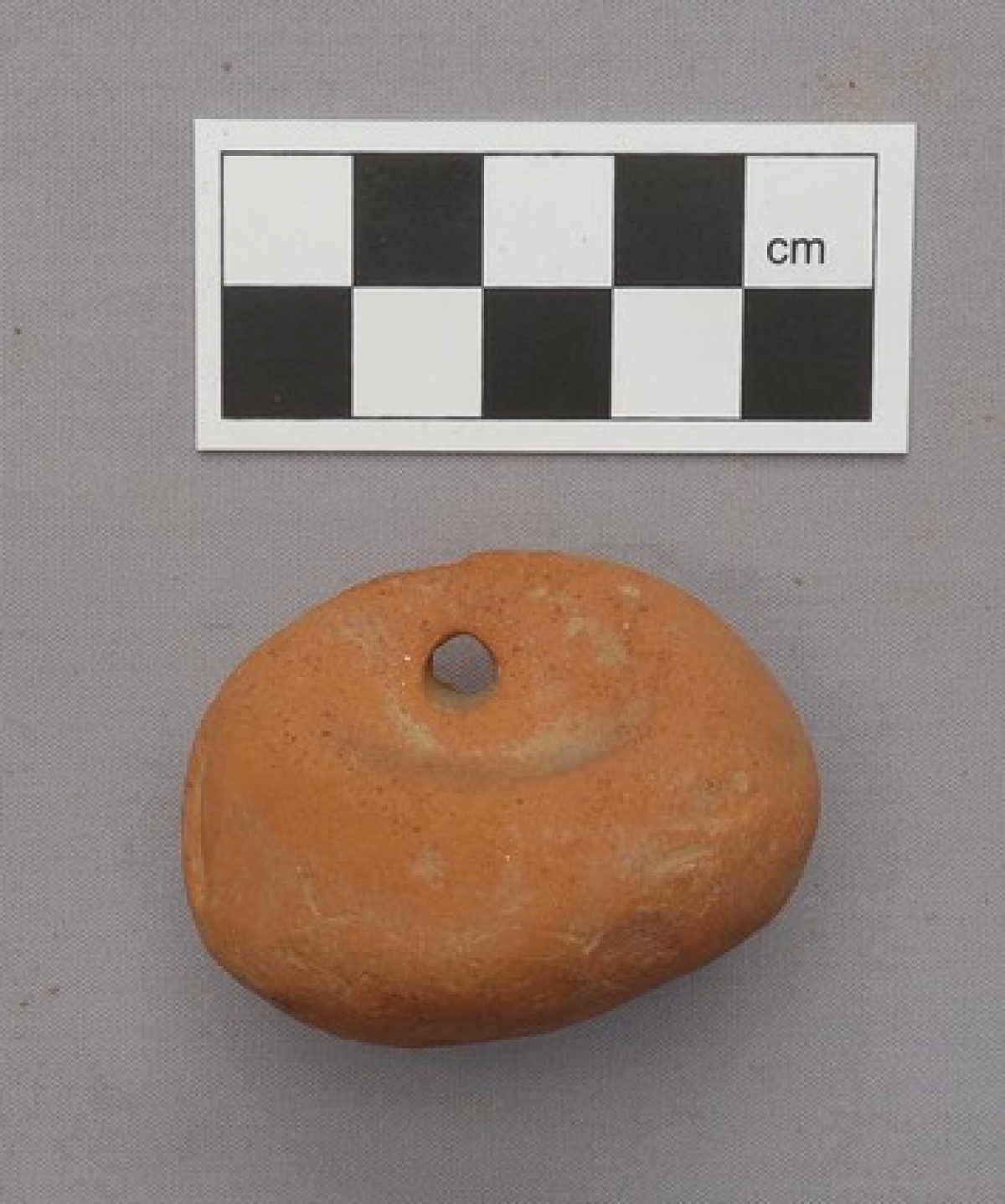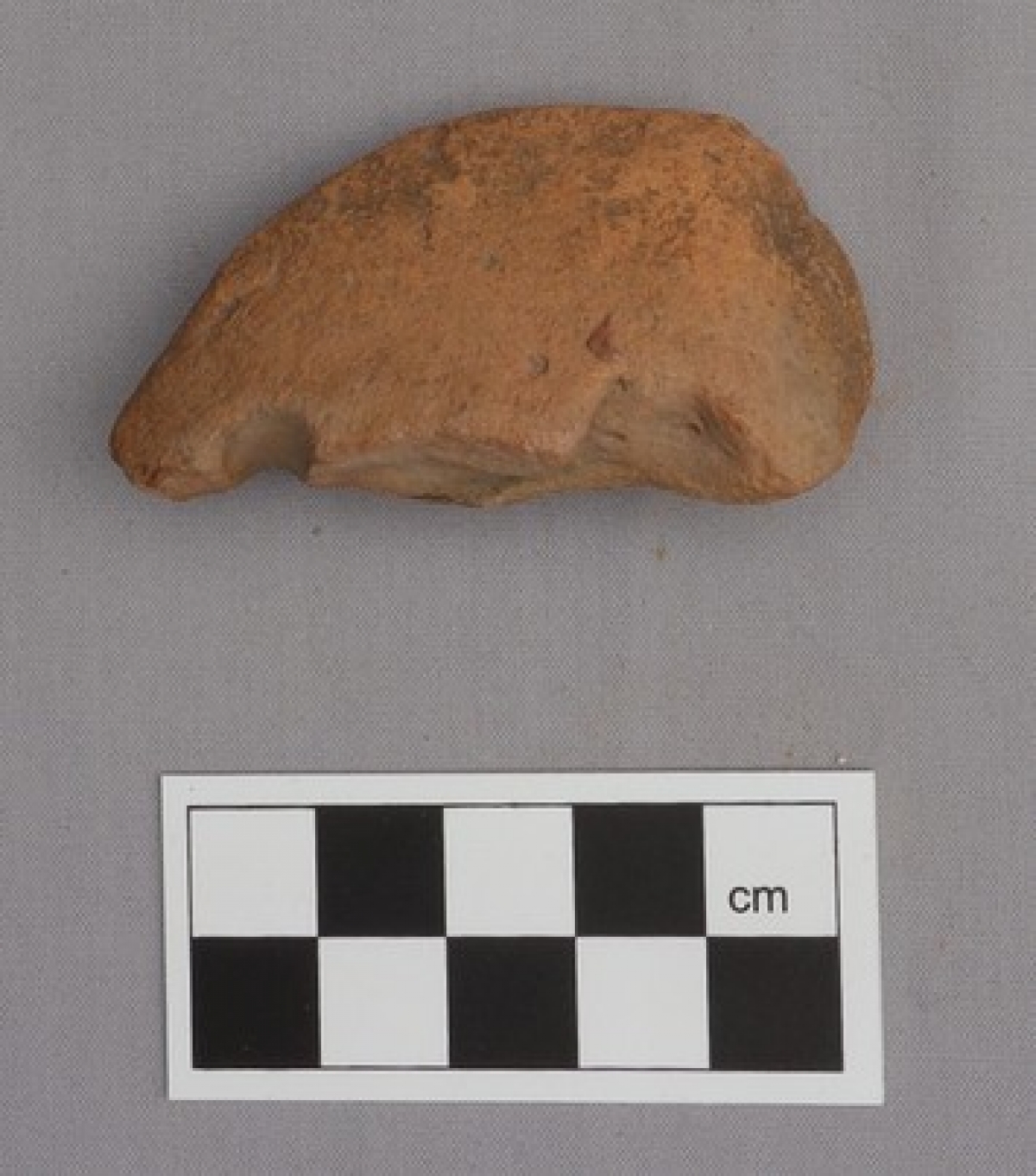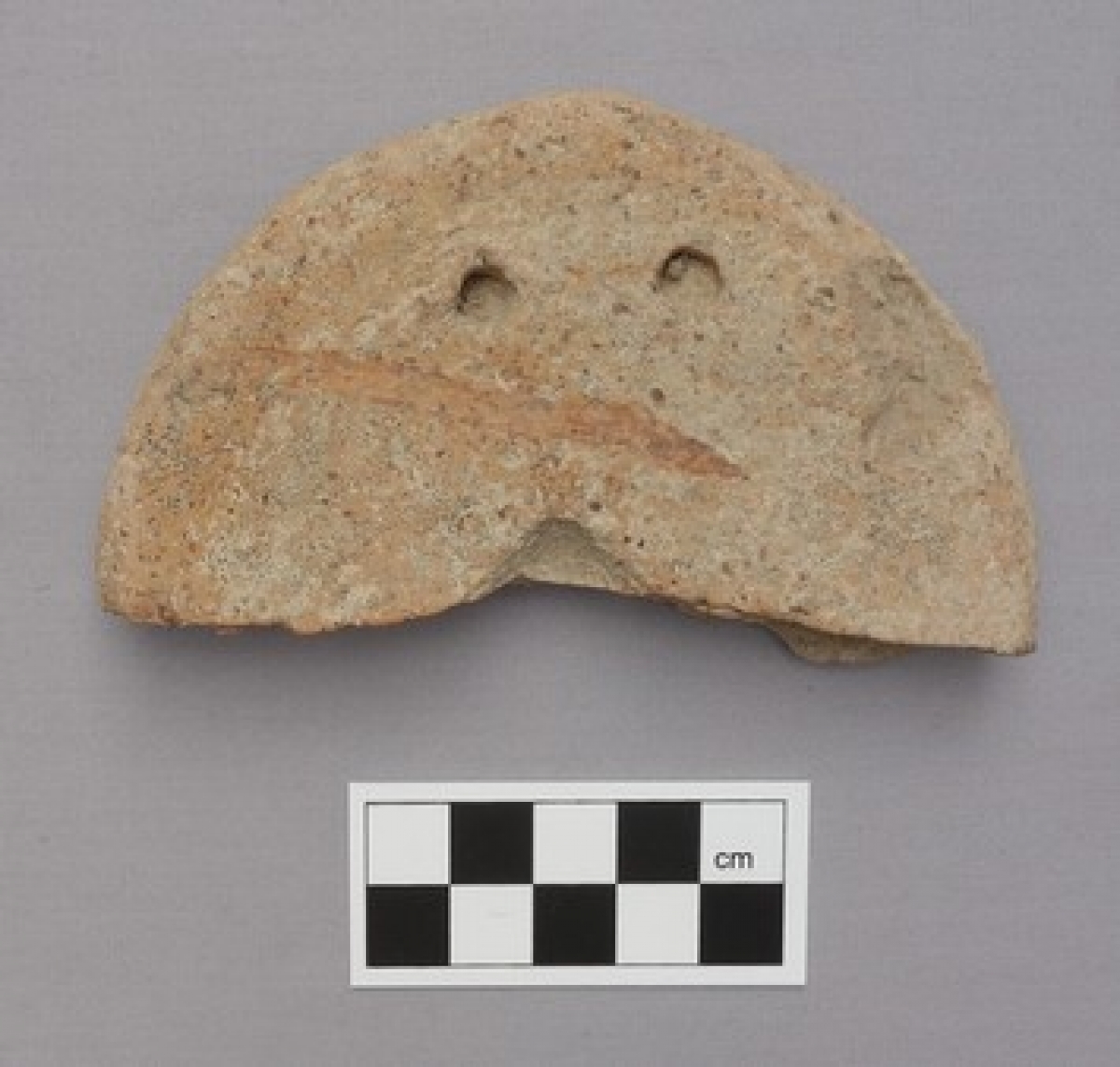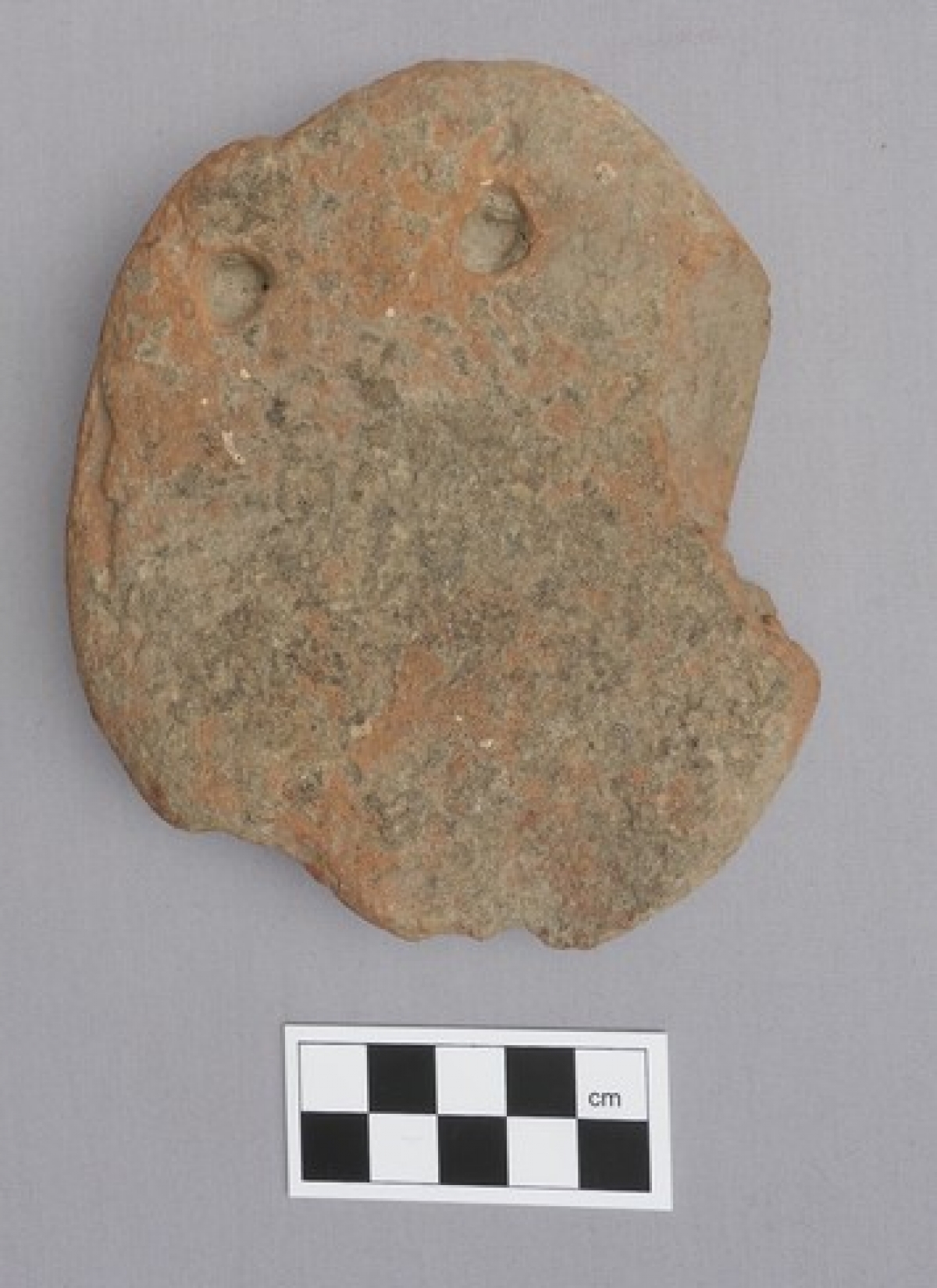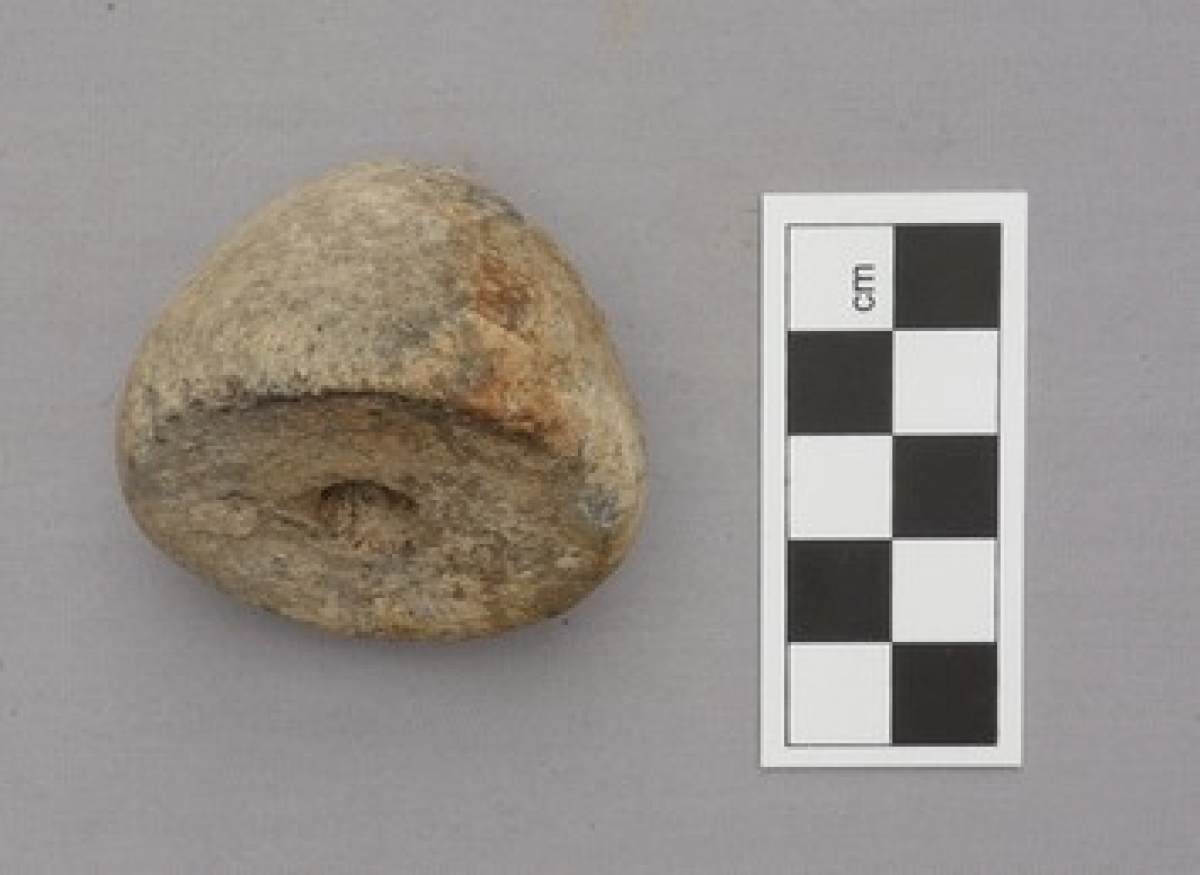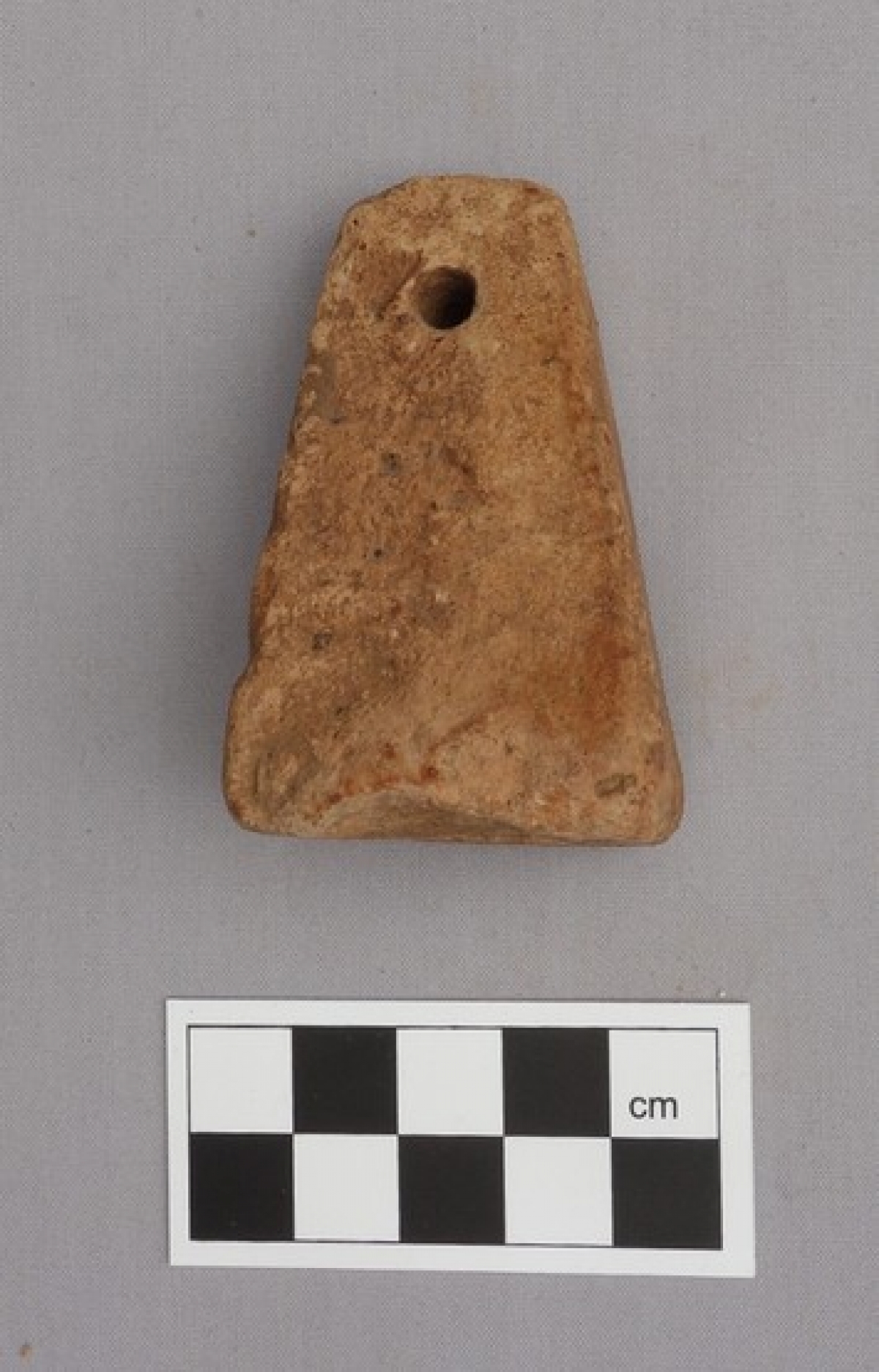Ancient Greek Loom Weights
Ancient Greek loom weights in the TRC collection
In 2014, a small collection of eleven ancient Greek loom weights was donated to the Textile Research Centre in Leiden, the Netherlands. The collection also included other textile tools, such as a bobbin (TRC 2014.0797), a bobbin fragment (TRC 2014.0798), and two spindle whorls (TRC 2014.0802 and TRC 2014.0803). All the tools are made of baked clay; the loom weights are mostly pyramidical or conical in shape with one perforation at the top. The artefacts come from different sites in Greece and range in date from the Archaic to the Classical, and perhaps Roman periods. This online exhibition will put these artefacts into context by exploring questions such as: what is a loom weight? How were they used? What can they tell us about ancient Greek textiles?
The text is by Shelley Anderson, volunteer at the TRC. A separate bibliography of the publications referred to in the text is provided below. All fifteen objects discussed in this online exhibition are grouped together in Chapter 11. Individual objects from this group, plus other illustrative material, are placed wherever relevant throughout the other chapters.
Further reading:
- Andrianou, Dimitra. “Eternal comfort: funerary textiles in late Classical and Hellenistic Greece” in Dressing the Dead in Classical Antiquity, ed. Maureen Carroll and John Peter Wild, 2012, Amberley Publishing, Stroud.
- Barber, E.J.W. Prehistoric Textiles: The Development of Cloth in the Neolithic and Bronze Ages, with Special Reference to the Aegean, 1991, p. 308. Princeton University Press, Oxford.
- Crowfoot, G.M. “Of the Warp-weighted Loom”. 1937, The Annual of the British School at Athens, 37, pp 36-47 (click here).
- Edmunds, Susan T. “Picturing Homeric Weaving”, at (click here), website of Harvard University’s Center for Hellenic Studies, Washington, DC.. Edmunds’s article includes a description, with links to images, of seventeen ancient Greek looms.
- Gromer, Karina. The Art of Prehistoric Textile Making: the Development of Craft Tradition and Clothing in Central Europe, 2016, Natural History Museum Vienna, Vienna.
- Haland, E. J. “Athena’s Peplos: Weaving as a Core Female Activity in Ancient and Modern Greece” at http://www.arch.uoa.gr/fileadmin/arch.uoa.gr/uploads/images/evy_johanne_haland/e_j_haland_cosmos_20.pdf
- Hoffman, Marta. The Warp-Weighted Loom: Studies in History and Technology of an Ancient Implement, 1964, Studia Norvegica, 14. Universitetsforlaget, Oslo.
- Mansfield, J. The Robe of Athena and the Panathenaic ‘Peplos’, 1985,PhD thesis, Ann Arbor.
- Margariti, Christina and Kinti, Maria. “The Conservation of a 5th-Century BC Excavated Textile Find from the Kerameikos Cemetery at Athens”, in Greek and Roman Textiles and Dress: An Interdisciplinary Anthology, ed. Mary Harlow and Marie-Louise Nosch, 2014, Oxbow Books, Oxford.
- Moulherat, C. and Spantidaki, Y. “Cloth from Kastelli Khania.” Arachne 3 (2009): 8-15.
- Nosch, Marie-Louise. “The Aegean Wool Economies of the Bronze Age”, at 2004 (click here). 2004.
- Rahmstorf, L. “An Introduction to the Investigation of Archaeological Textile Tools”, at https://www.academia.edu/19555832/An_introduction_to_the_investigation_of_archaeological_textile_tools Written 2006, revised 2008 and 2011.
- Thorin, Ida. Weighing the Evidence-Determining and Contrasting the Characteristics and Functionality of Loom Weights and Spindle Whorls from the Garrison at Birka. 2012, Master’s thesis, Archaeological Research Laboratory, Department of Archaeology, Stockholm University.
- Vogelsang-Eastwood, Gillian. An Introduction to Archaeological Textiles, 1993, Textile Research Centre, Leiden.
- von Hofsten, Sven. “Weaving as a Means of Preserving the Collective Memory in Archaic and Classical Greece”, in In Memoriam: Commemoration, Communal Memory and Gender Values in the ancient Graeco-Roman World, ed. Helene Whittaker, 2011, Cambridge Scholars Publishers, Newcastle upon Tyne.
For this online exhibition:
- Author: Shelley Anderson.
- Web-design: Joost Koopman
- Exhibition design: Willem Vogelsang
- Publisher: TRC Leiden.
- Year of publication: 2018.
- Copyright: All illustrations of objects housed in the TRC collection can be used free of charge, but please add to the caption: "Courtesy Textile Research Centre, Leiden" and the pertinent accession number of the object.



